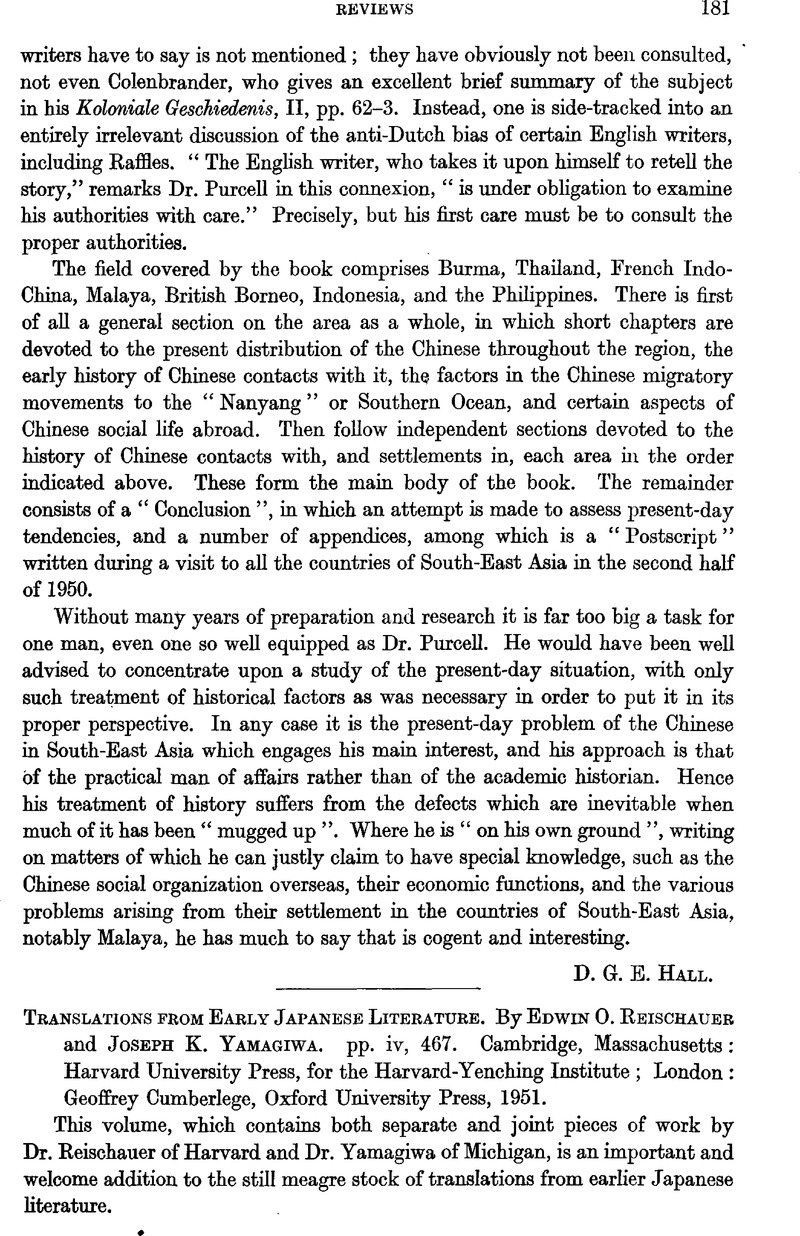No CrossRef data available.
Article contents
Translations from Early Japanese Literature. By Edwin O. Reischauer and Joseph K. Yamagiwa. pp. iv, 467. Cambridge, Massachusetts: Harvard University Press, for the Harvard-Yenching Institute; London: Geoffrey Cumberlege, Oxford University Press, 1951.
Published online by Cambridge University Press: 24 December 2009
Abstract

- Type
- Reviews
- Information
- Bulletin of the School of Oriental and African Studies , Volume 15 , Issue 1 , February 1953 , pp. 181 - 187
- Copyright
- Copyright © School of Oriental and African Studies 1953
References
page 185 note 1 C. J. Dunn and D. E. Mills took the chief part in preparing this particular piece.
page 186 note 1 Can anyone be helped by note 53 (page 170), which reads: “Kuma naki tsuki, lit., ‘the cornerless moon.’”? Kuma has as part of its range of sense “an indentation”, “an inside angle”, etc., and “corner” is no doubt an appropriate rendering in some contexts, but the idea of “shady patch”, “dark part”, etc., may well be quite as old; and tsuki can be “moonlight” as well as “moon”. The phrase has been adequately translated as “the moonlight which penetrated every corner”; the addition of the footnote can only suggest a “quaintness” in Japanese thought which just isn't there.




